
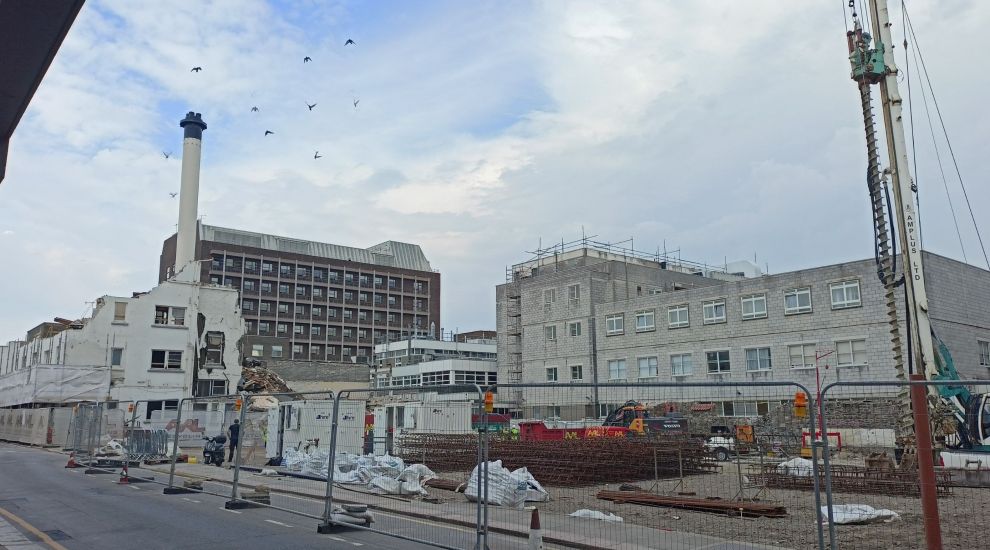

Now that the ‘Our Hospital Project’ has been dropped, what ‘New Healthcare Facilities’ are we getting, and how much will they cost?
Many of the individuals who formed the new Government last summer had criticised the Our Hospital plans on the campaign trail, so it was not surprising that, when in power, they plotted a new course.
A review was published last November and, a month later, States Members allocated around £50m in the Government Plan for 2023 to progress plans, including buying a cleared site in Kensington Place that had been earmarked for social housing.
Meanwhile, former Our Hospital Project political lead Deputy Lyndon Farnham continues to criticise the change in direction, arguing that the ‘New Healthcare Facilities’ will be more expensive and less efficient than his one-site plan.
So where might the Government be going?
The current Government argues that we probably became too fixated on solving all our medical problems with the building of a single new hospital which, they say, was never going to go everything, nor was it likely that all services would have fitted there.
In the end, it was only ever an infrastructure project to solve a problem, and the concept of what a hospital should be will probably look very different in a decade’s time,’ they add.
It’s why the Government say that the rather bland ‘New Healthcare Facilities’ tagline is more accurate that a pithier project name.
Talking of which, it’s also why ‘project’ has been replaced by ‘programme’ – to emphasise the longer timescale and deconstructed approach. There will not be, for instance, a single delivery partner / contractor working to a single contract.
The Government also hope that building several ‘facilities’ over the next eight years won’t reignite previous debates over whether Jersey needs an ‘acute’ or ‘general’ hospital, or other arguments which dogged the ‘everything in the same place, at the same time’ Our Hospital Project.
The Government say the answer is an emphatic ‘no’. There are already plans which show how various medical specialisms were to be grouped together up at Overdale. So, ministers say they already have much of the ‘clinical adjacencies’ in place. They then must consider the constraints of each site to work out what goes where.
The team designing the new ‘Healthcare Facilities’ are currently presenting their ideas to staff on which clusters will work and asking for their thoughts.
59 HCS staff recently attended the drop-in sessions and group meetings.
Past discussions over a need for ‘hot’ and ‘cold’ hospitals and ‘acute’ and ‘ambulatory’ hospitals are also likely to be revisited when deciding ‘clinical adjacencies’.
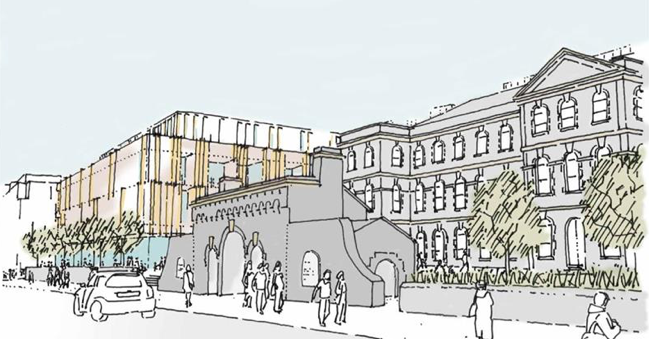
Pictured: A previous plan for a new hospital in Gloucester Street from 2018.
The second Gloucester Street plan, which was rejected in 2019, was a 57,000 m2 scheme, including the redevelopment of Westaway Court; the Our Hospital project increased that to 69,000 m2.
The Government is confident that, by splitting disciplines across sites, it can propose designs with smaller floor areas, which will be less intensive, more appropriate to the individual sites, and more amenable to Planning.
When it comes to Overdale, there is already a planning permit which was received after the Our Hospital plans was given permission from the last Environment Minister.
That sets a precedent which allows – in theory – the Government to build within the parameters established by that permit.
Andium Homes also had planning permission to build homes in Kensington Place to a certain size and scale.
The Overdale permit allows the Government to work within its terms, with the option of making a revised plan further down the line, if needed.
However, the Government has yet to discharge the planning conditions attached to that permit, which includes a detailed landscaping plan and carbon-emission assessment.
It will not proceed with these until it has a clearer idea of what will be built there. However, one thing almost certain is that it will be smaller than the single-site campus buildings.
Ministers hope that the existing permit will be their golden ticket to avoid having to hold another planning inquiry for their proposals.
One permit condition that the Government is keen to satisfy is to submit a ‘detailed and robust’ waste management plan, explaining how existing buildings will be demolished.
The Government wants to clear them this summer, a process currently complicated by a lack of space to store hazardous material. As soon as the plan has been accepted, the Government will go out to tender to find a demolition contractor.
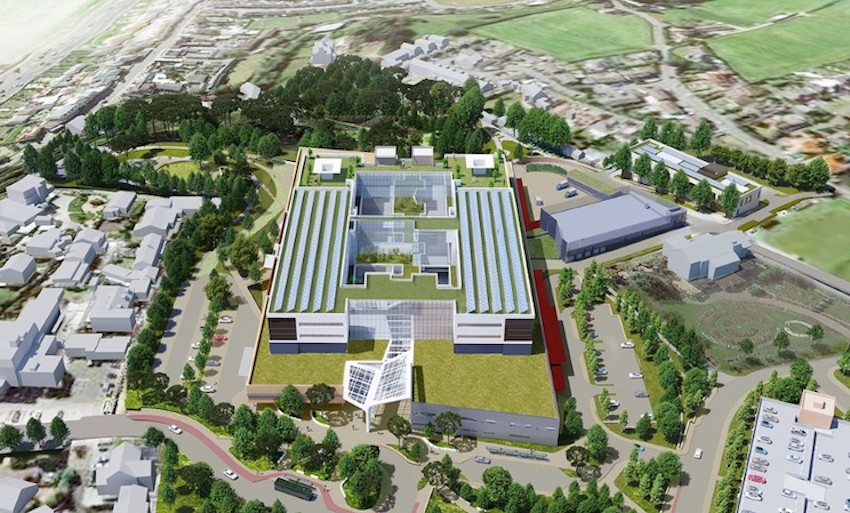
Pictured: The Government already have planning permission to construct a number of large buildings at Overdale.
The plan is for demolition to start in June, beginning with the long derelict buildings at the rear of the site. During the Our Hospital process, there were public calls for newer buildings – including the Westmount Centre, which houses Samarès Ward, and the Poplars Day Centre – to be retained.
However, it is understood that the Government is leaning towards demolishing these buildings too, on the basis that their designs are not ideal for the provision of modern healthcare, so the optimum solution is for them to go.
However, nothing has been determined yet.
The Royal Association of British Architects has an eight-stage ‘plan of work’ which all major projects follow. The Our Hospital Project had completed RIBA 3 (‘Spatial Coordination’) and was about to move to RIBA 4 (‘Technical Design’) when the new administration pulled the plug.
In essence, the single-site scheme had worked out where everything was going to go and was about start the detailed drawings.
The current Government believes it has already passed RIBA 0 (‘Strategic Definition’) and is firmly in RIBA 1 (‘Preparation and Briefing’). However, it hopes that this stage will be a relatively speedy one because of previous work done, including the Our Hospital Project’s ‘functional brief’, which established the appropriate clinical adjacencies.
The Government says its review of the last functional brief allows it to update these proposals.
For instance, it is understood that a hydrotherapy pool – controversially left out of the last functional brief – will be included in the new one. There may also be more rehabilitation beds provided than the previous provision, which was aligned to the now-superseded Jersey Care Model, promoting more care at home and in the community.
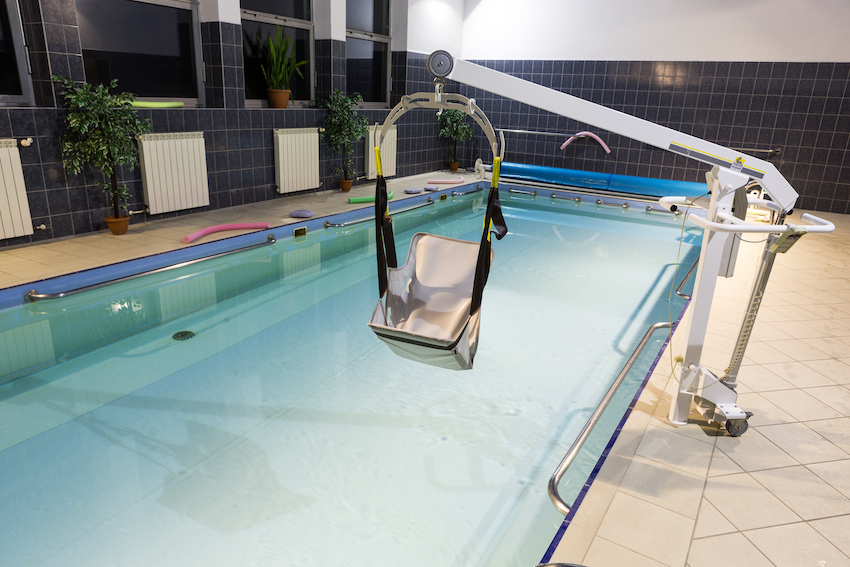
Pictured: The Government appears keen to include a hydrotherapy pool in its 'New Healthcare Facilities'.
An argument for the ‘programme’ approach is that services don’t all have to be squeezed into a single site, so the Government has more flexibility.
Critics of the Our Hospital Project said it was the need to put everything together at the same place at the same time that resulted in such a large building, 31m high at its highest point, being designed.
Supporters said it was crucial to get most services under one roof, because that’s when healthcare works best.
At the moment, the new programme team is putting together the ‘clinical design brief’ which will feed into the feasibility and options appraisal, which will mark the end of RIBA 1.
It hopes to complete that process by May, when it will move on to RIBA 2 (‘Concept Design’).
The feasibility study will also help inform the ‘Strategic Business Case’ which defines the strategic need and how it will be met.
This is due to be completed by this summer.
Ministers and officials have recently conducted a fresh round of briefings with States Members. The former’s current thinking is to include the programme’s first Outline Business Case with the next Government Plan, which will be published this autumn and debated in December.
Unlike the previous single project, there is likely to be several OBCs rather than one; however, the first OBC may give an indication of the cost of the overall programme.
That said, there is understood to be reluctance in some quarters to release a figure, because it would remove an important bargaining tool when negotiating with contractors. Critics argue that no NHS trust in the UK would put an expected cost into the public domain before securing a contractor, but Jersey’s Public Finance Manual says you have to.
Estimates from external consultants contained in a £30,000 review commissioned by the current Council of Ministers shortly after its election listed construction and client costs for a multi-site option as being between £646m and £775m.
The Government is keen to avoid comparisons between the £804.5m total cost of the Our Hospital project – included in its own OBC, published in July 2021 – and its new multi-site plan.
Critics such as Deputy Farnham say it is because the new plan will be more expensive than the old one; the Government says that comparisons are irrelevant, because the £804.5m is already two years out of date, and look what has happened to prices since then.
It also argues that the capital cost is not the important figure; rather, it is the overall cost of running the multisite hospitals over their operational lifetimes which is key, which could be 50 times the capital cost.
It points out that it could buy cheap equipment for the new hospitals but that could lead to taxpayers having to spend twice as much on maintenance or replacement.
It adds that while inflation has risen sharply over the past year, it is only at the point of taking out a loan or bond does the cost of a project become a reality. Everything up to that point is just a best estimate.
‘A hospital costs what a hospital costs, in the same way a loaf of bread costs what a loaf of bread costs,’ goes the argument.
Critics, however, argue that duplication across multiple sites costs money that you wouldn’t have to pay for a single hospital.
Meanwhile, the Government says whatever the cost, the multisite option will be more “affordable” because costs will be spread over a longer time. It’s the same as saying that a £40,000 car is more affordable if you pay for it in monthly instalments
“Don’t focus on the headline figure; look at the OBC in the round,” urge the Government.
The Government plans to purchase the cleared Kensington Place site off Andium Homes this month for £16m, although Deputy Farnham has lodged a proposition calling for this transaction to be delayed.
It has not been decided yet what will go where but it is expected that enabling works will begin on the site in 2025, a year after work starts at Overdale.
Overdale’s completion date is predicted to be January 2028, along with a new mental health unit in an as-yet-undetermined location, while Kensington Place’s completion date is January 2029.
It is unlikely that all health needs will be met in these two buildings, so the former Les Quennevais School – to be named the Enid Quenault Health and Wellbeing Centre after a former Constable of St Brelade – is likely to be used for longer than the five years it was planned to be open under the Our Hospital Project.
It is also likely that part of the existing General Hospital in Gloucester Street / the Parade will form part of the New Healthcare Facilities.
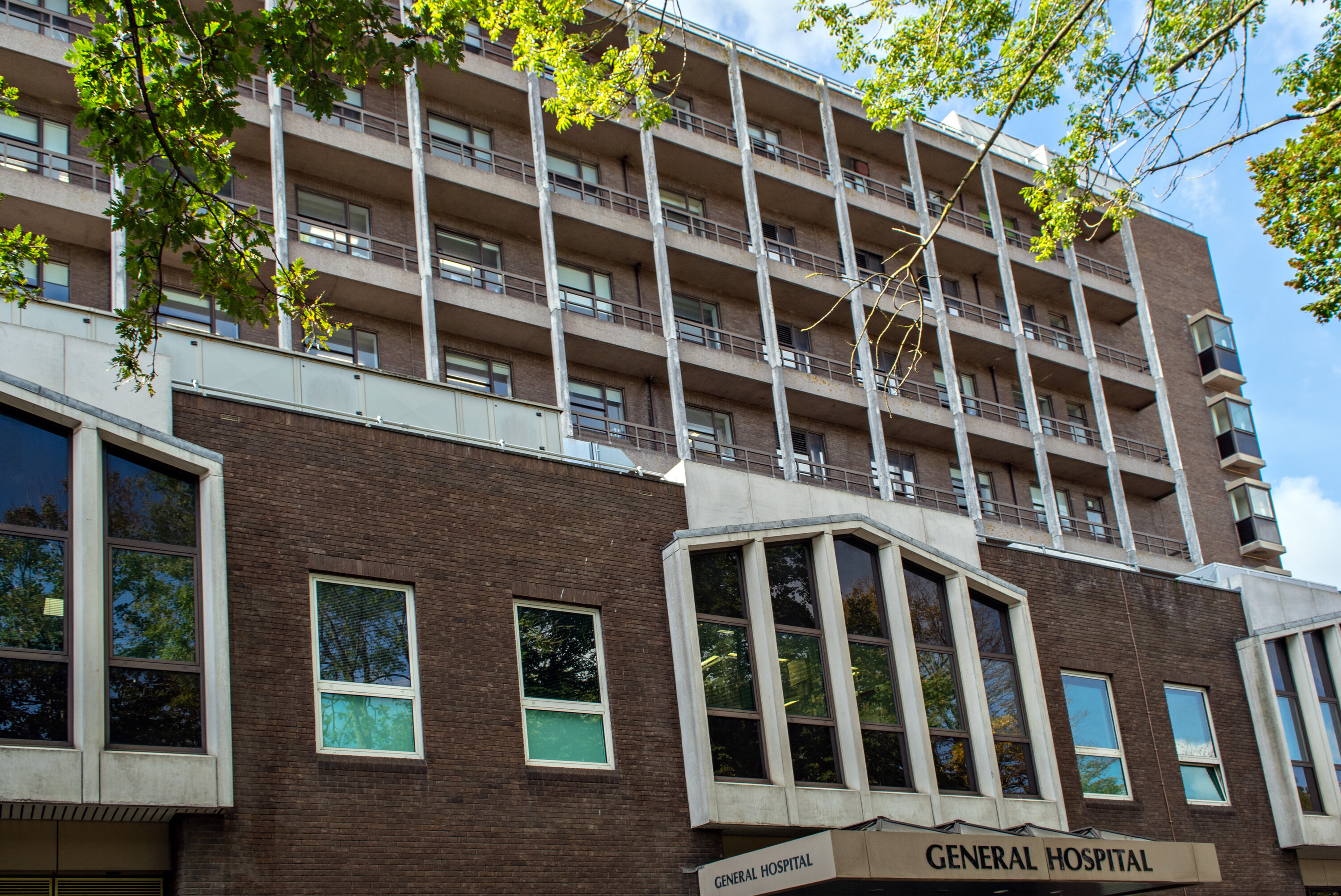
Pictured: It is not yet known if the large block in the Parade - opened in the mid 80s - will be retained as part of the 'New Healthcare Facilities'.
Although which part exactly is yet to be determined, it seems probable that buildings nearer Kensington Place – so, the Gwyneth Huelin Wing, for example – will be demolished and rebuilt as part of the hospital.
It is equally probable that the original listed Victorian section which lines Gloucester Street will not form part of the new plan. It is widely deemed to be past its sell-by date. Whether part of the large block in the Parade, which opened in the mid 80s, is used is yet to be decided.
The additional facilities in Gloucester Street are destined to be completed by January 2031, two years after Kensington Place is up and running.
So, with live planning permission on two of the three principal locations, a converted former school close to completion, and a budget to keep the existing hospital operational, the Government hope its phased approach will finally end the long wait for a new hospital, or -to use the correct vernacular – healthcare facilities.
Comments
Comments on this story express the views of the commentator only, not Bailiwick Publishing. We are unable to guarantee the accuracy of any of those comments.